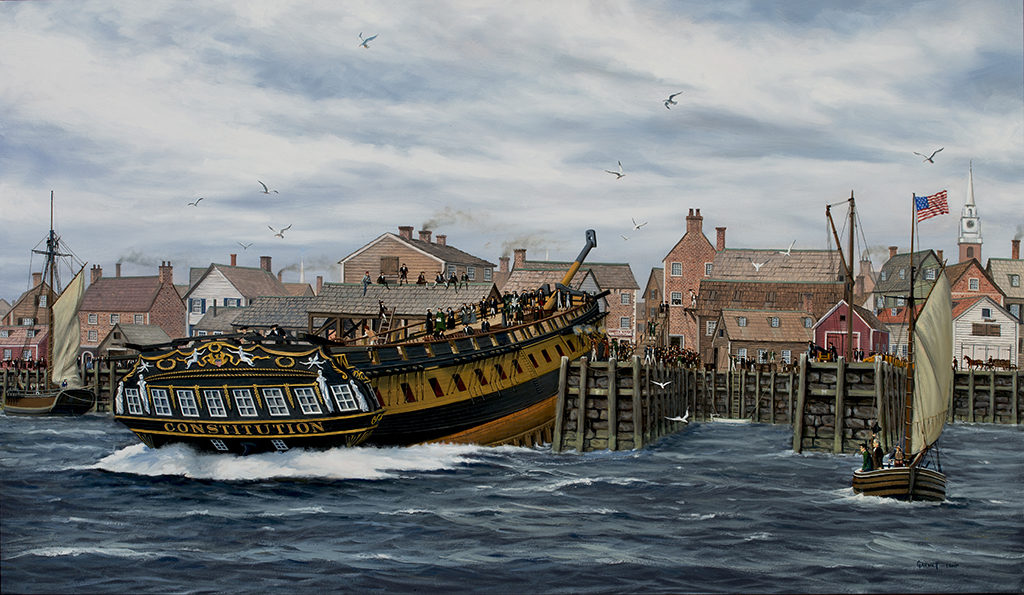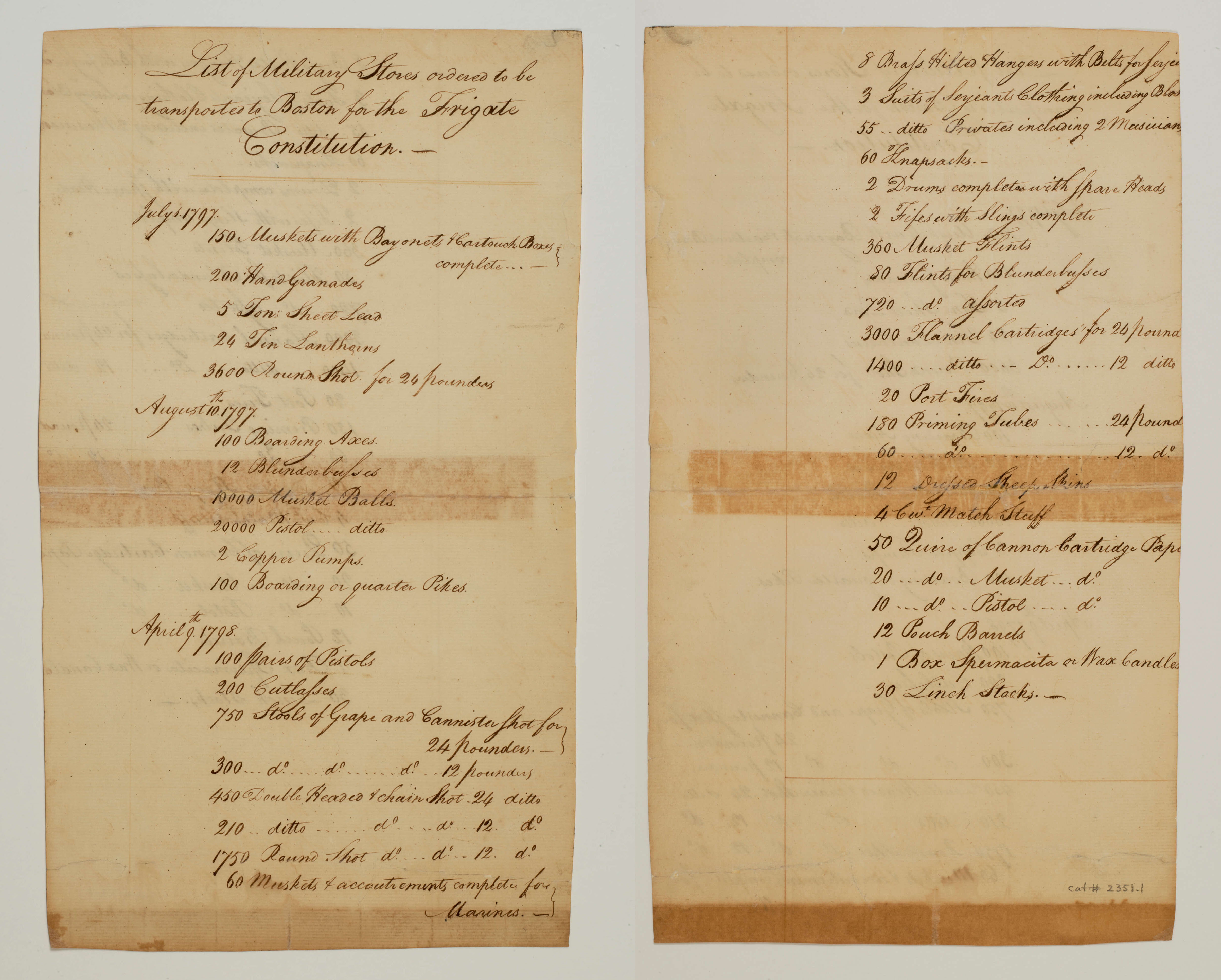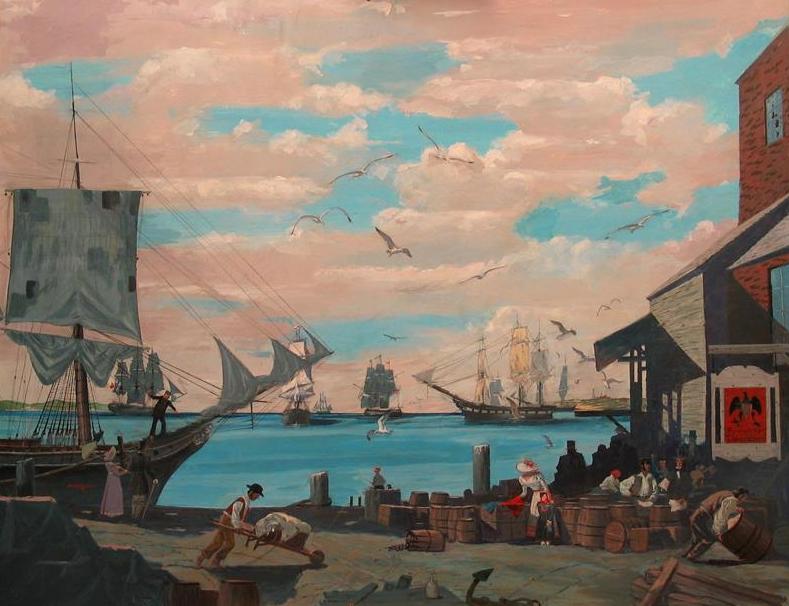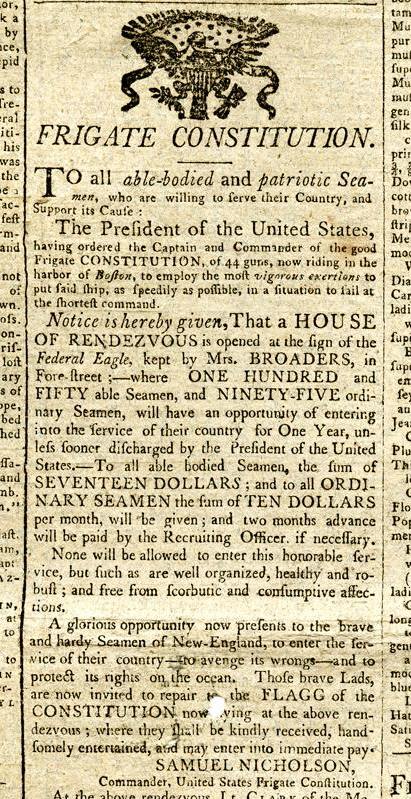After two failed launch attempts the previous month, USS Constitution’s hull finally slid down the ways at Edmund Hartt’s shipyard and into Boston Harbor on October 21, 1797. The launch date is popularly commemorated as Constitution‘s birthday, and, as with most ships, serves to mark the beginning of the ship’s service career. But, also as with most ships, the launch of USS Constitution did not mark the completion of the ship’s construction, much less its readiness to sail.

The nine months of work partially reflected the normal effort required to rig and outfit a 44-gun frigate of Constitution‘s size. But there were also delays as the fledgling U.S. Navy sorted out the logistics of acquiring and delivering everything that was needed to outfit a naval warship.
Once in the water, work continued on Constitution‘s interior. The decks themselves had been finished prior to launch, but bulkheads, removable walls for the cabins, and galley arrangements had to be completed. It took until the end of December 1797 before most of the interior carpentry was completed.
At the same time, riggers had begun setting up the ship’s complex array of masts. The three massive lower masts, whose timbers had been sitting in the shipyard for two years, were stepped into place by late December 1797. Meanwhile, construction and assembly work continued on the dozens of upper masts, yards, and other spars needed for the ship’s sailing rig, along with hundreds of wooden trusses and supports needed to lock various mast and spar sections together. Miles of rope of myriad sizes arrived to make the ship’s standing rigging (to connect the masts to the hull) and the running rigging (to control sails and yards).
Acquiring the appropriate gunnery was an issue for the new Navy. A variety of contracting disputes and difficulties had delayed the forging of cannons for the ship. The thirty 24-pound guns were ready at launch in 1797, though not immediately loaded on board. By the early summer of 1798, fourteen 12-pounders were acquired. and another sixteen 18-pounders were borrowed from the commonwealth of Massachusetts. To secure the ship’s stability, immovable iron ballast were added to the bottom of the hold and loose stone ballast were added that could be piled around barrels to prevent their rolling around.
By the spring 1798, the pressure to get USS Constitution underway was mounting. Diplomatic efforts to resolve the issues with France in the Caribbean were floundering, and it was becoming clear that the Navy’s new ships were needed in the Caribbean to protect American shipping.
In April, Secretary of War James McHenry began requisitioning armament supplies to be delivered to Constitution. The list for the 24-pound guns included 2,957 shot (cannon balls), 450 double-headed and chainshot, 750 stools of grape and cannister shot, and 3,000 flannel cartridges for gunpowder. For possible boarding actions or close combat, there were 100 pairs of pistols, 100 boarding axes, and 200 cutlasses. There were muskets, musket balls, and cartridges for the ship’s Marines.



On July 22, 1798, USS Constitution finally got underway. The ship departed Boston Harbor for the first time to begin the ship’s patrol of the Atlantic Coast of the United States. It was an uneventful departure. As with any new ship, there was still a lot to work out on the first voyage. As Boston faded over the horizon, Constitution was finally out on the open ocean, and finally able to truly begin its life as one of the U.S. Navy’s first frigates.
The Author(s)
Carl Herzog
Public Historian, USS Constitution Museum
Carl Herzog is the Public Historian at the USS Constitution Museum.